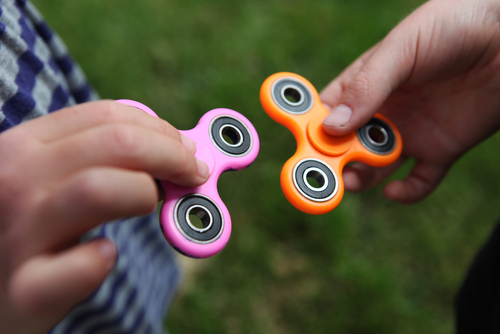
In a recent development that has caught the attention of parents and educators alike, a line of fidget spinners being sold on a popular online marketplace has stirred controversy due to their resemblance to a symbol fraught with historical baggage. The toys, which have been given a high rating by consumers, are Valentine’s Day themed and are being marketed as suitable for children.
The fidget spinners in question are designed to be distributed as party favors in elementary classrooms, with a product listing suggesting they are ideal for children between the ages of 3 and 12. The inclusion of these toys in a classroom setting has raised eyebrows, considering the symbol’s association with one of history’s darkest periods.
Imagine sending a kid to school with these swastika fidget spinner valentines off Amazon. Be mein, I guess pic.twitter.com/ezAr4wZTAN
— Critter (@hermitcritter) January 16, 2024
While some customers have praised the product for its novelty and entertainment value, others have expressed concern over the inadvertent education of young minds on symbols that are better suited for more mature discussions. The debate centers around the appropriateness of introducing such imagery to children who are not yet equipped to understand the historical context and the gravity of the symbol.
One parent noted the popularity of the toy in their child’s second-grade class, highlighting the innocence with which children can approach objects devoid of the knowledge of their historical connotations. This raises important questions about the responsibility of manufacturers and retailers to consider the implications of the products they sell.
nazi kid showed this swastika fidget spinner at school via /r/WTF https://t.co/LO5ECVyY7K pic.twitter.com/eqZgIv4Aow
— me (@not_actuallyme) December 22, 2017
It is recommended that formal education on World War II and its associated symbols begin in middle school, allowing students to have a more developed understanding of the subject matter. Introducing such complex topics at an earlier age could lead to confusion and misinterpretation among young learners.
The company responsible for manufacturing these toys is based overseas, and it appears that there may have been an oversight regarding the cultural sensitivity of the product for the market it serves. This incident underscores the need for a more thorough vetting process for products intended for children, especially those that may carry significant historical weight.
As the discussion continues, it is clear that the intersection of education, commerce, and historical awareness is delicate.
The situation serves as a reminder that even seemingly innocuous products like children’s toys can become the center of a larger conversation about our collective past and the symbols we choose to represent us.













